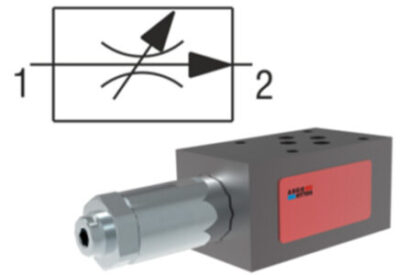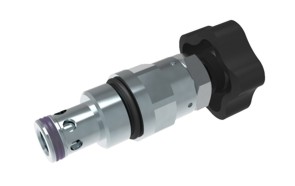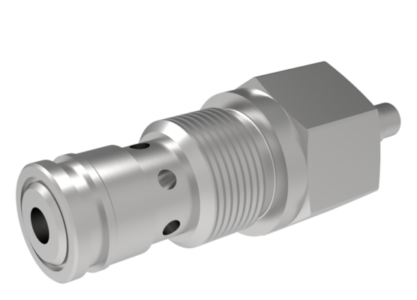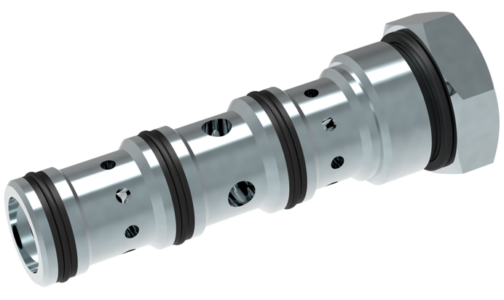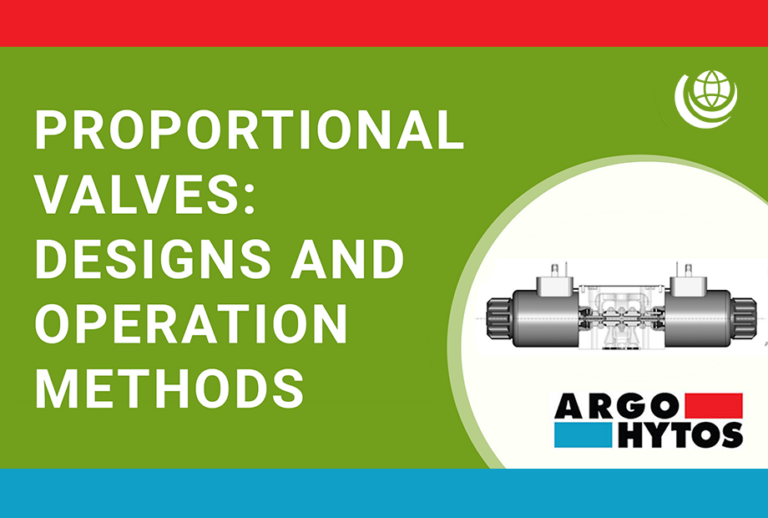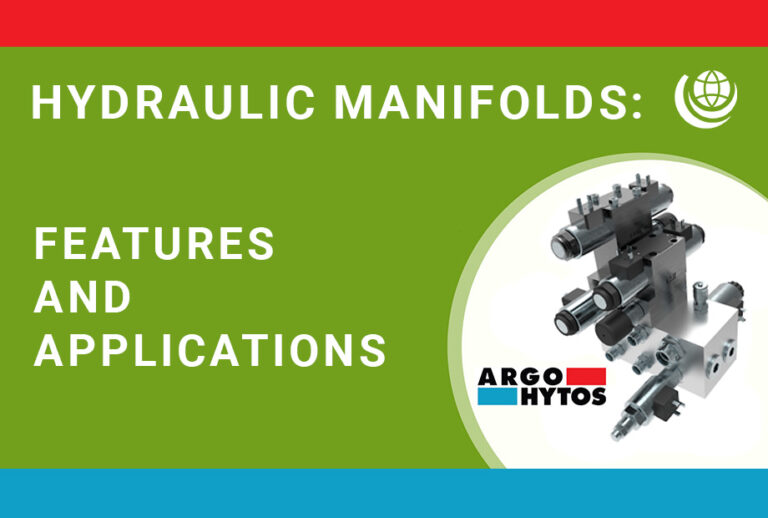In terms of design, a distinction is mainly made between two types of flow control valve. These are screw-in valves for block installation and plug-in valves (also called slip-in valves) for block installation.
- Screw-in valves for block installation are compact and are particularly suitable for systems with limited space.
- Slip-in valves for block installation are plugged directly into corresponding holes in the hydraulic block. They allow easy assembly and disassembly and also offer high power density.
Intermediate plates for vertical stacking, in accordance with ISO 4401, allow valves to be installed in a valve stack configuration. This provides high flexibility in hydraulic system design and allows parallel control of multiple hydraulic functions.
The different design principles and styles of flow control valves offer a wide range of options for precise control of flow in the hydraulic system. By choosing the right valve for your individual application, you can optimize the efficiency and performance of your system.





